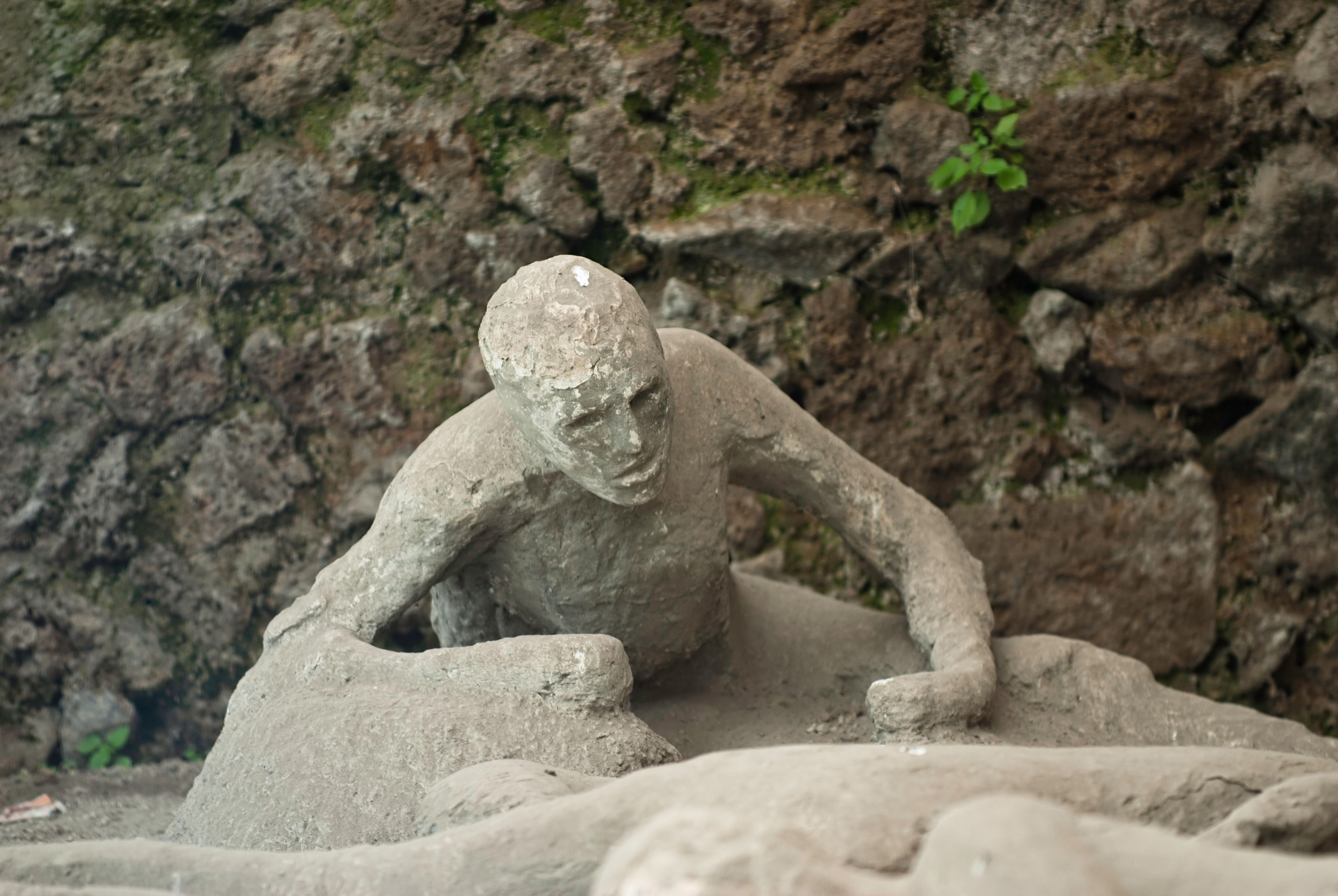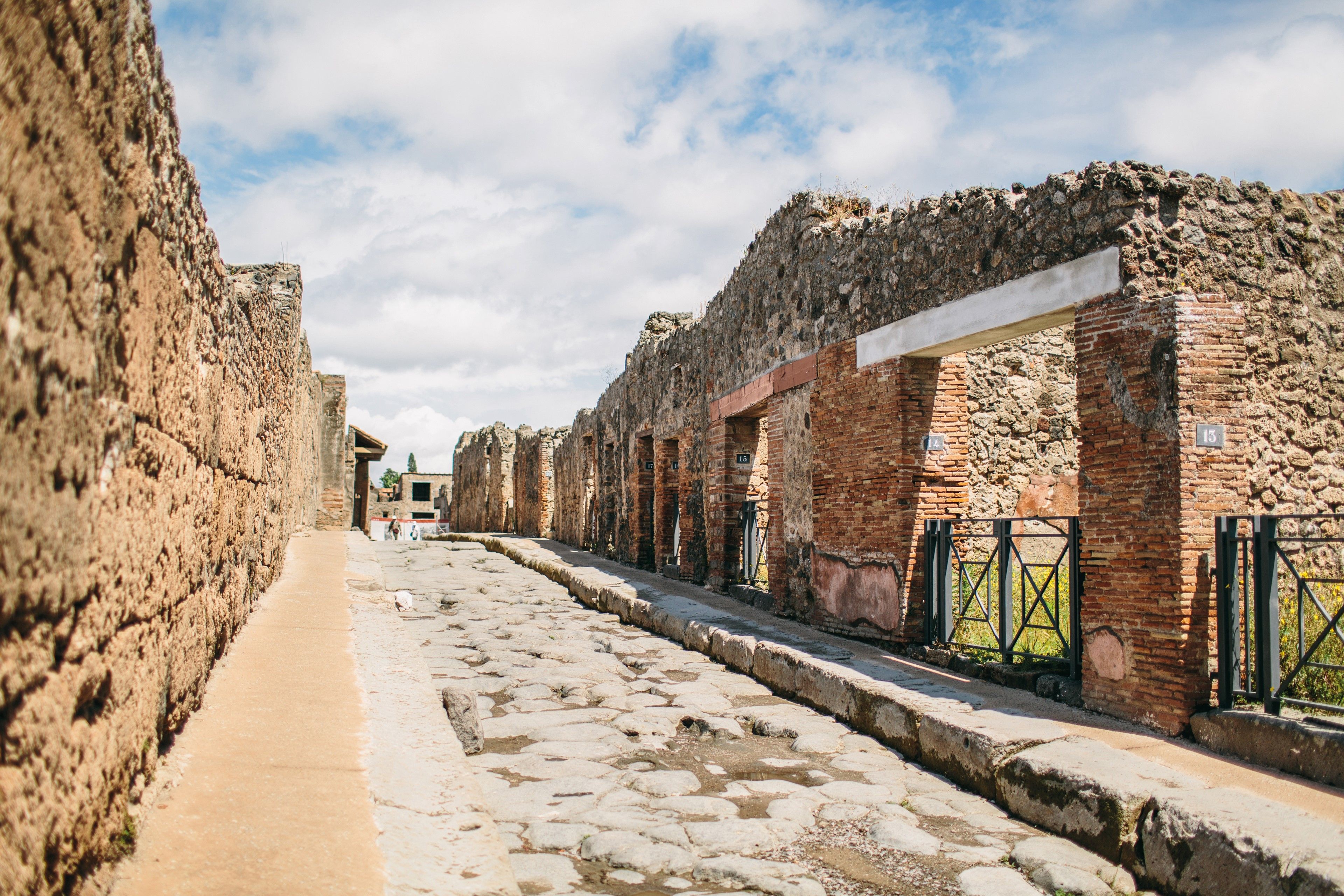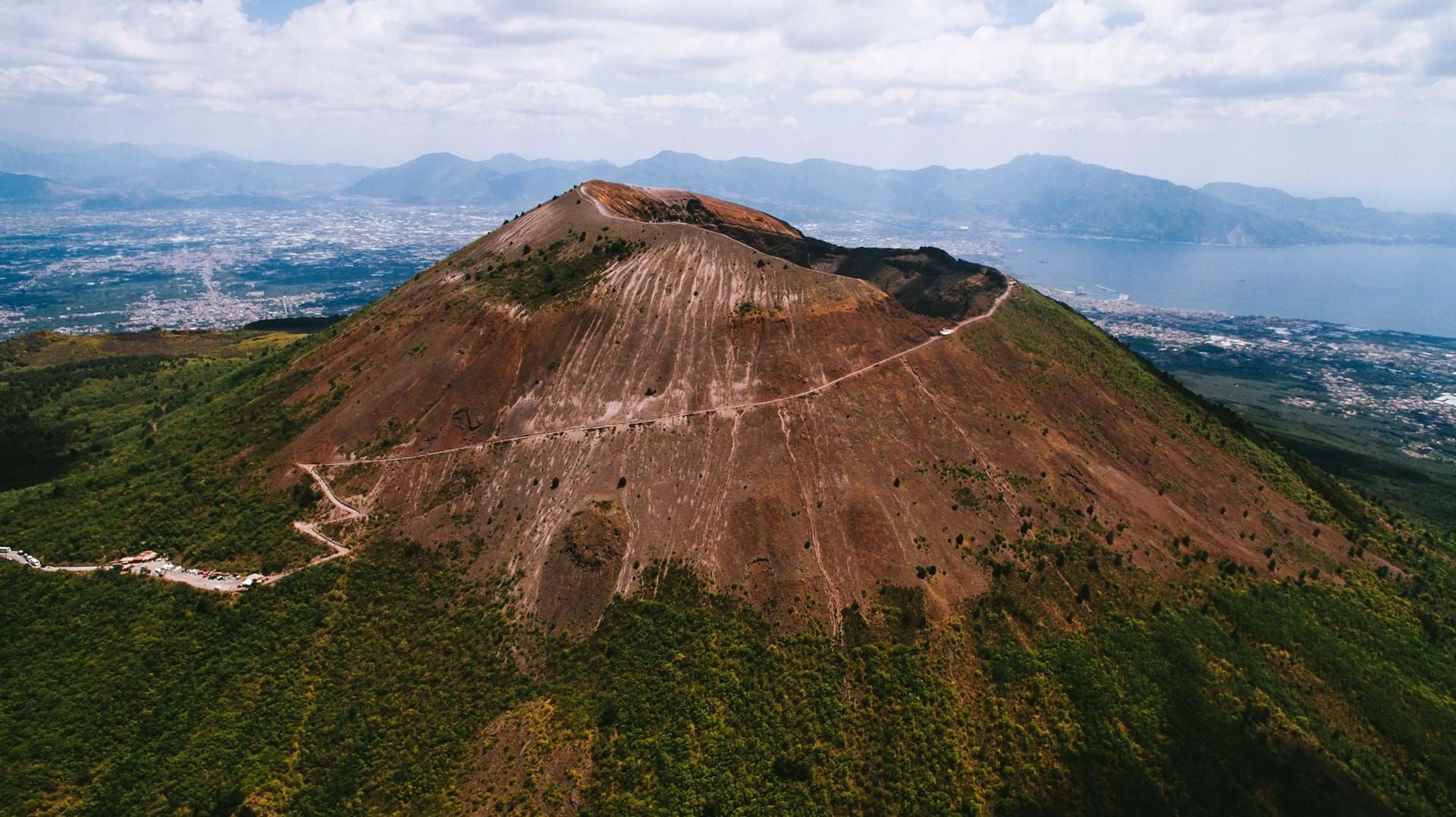Roman Life Revealed: The Haunting Immediacy of Pompeii and Herculaneum

Nowhere in the world gives deeper insight into Roman life than the dramatic towns of Pompeii and Herculaneum. Before the cataclysmic eruption of Vesuvius these were thriving, lively seaside towns that have since been frozen in time.
Pompeii was once a centre for trade, equipped with many bars, shops and brothels, while neighbouring Herculaneum was an affluent and elegant town. All this came to an abrupt halt, however, one autumnal day in AD 79, when Vesuvius, which had done little more than rumble for years, erupted with incredible force.
Two thousand years later, the sites of the Bay of Naples confront the modern visitor with a vivid, haunting immediacy like nothing else in the ancient world. In some cases, we even know the names, professions and personal histories of the people who owned the villas and shops we visit. The preservation of Herculaneum, Pompeii and its surrounding sites is remarkable, and the archaeology is beyond compare, which is why we have been leading tours here for over 30 years. This is, however, perhaps the most exciting time for visitors as discoveries are being made and new houses opened. Take the chance to journey back in time, to walk with us as the Romans did, from amphitheatres and baths to forums, as our Guide Lecturer conjures an evocative picture of the everyday life of these prosperous Roman towns.
Join Andante and their expert guide lecturers to get close to past in Pompeii, Herculaneum and Classical Campania. Walk in Roman footsteps and discover the latest finds.

Pompeii
No other site compares in revealing details of daily life in a Roman town than Pompeii. Look forward to visiting some of the town’s most well-preserved buildings as well as an amphitheatre, theatre, forum, bathhouses, bars and even brothels. Keep an eye out for fountains in the street, worn from where countless people rested their hands to take a drink and the Roman graffiti which can still be seen on the walls. As part of the Great Pompeii Project, recent finds here include three skeletons, whose manner of death is as gruesome as the initial evidence might suggest but in a surprising way; a domus from the Samnite period, repurposed into a bakery, which has shown us a small detail about how the Pompeian’s were experts at reusing and recycling materials and seismological evidence that confirms to modern volcanologists the accuracy of the account written by the eye-witness Pliny the Younger for his friend and historian, Tacitus. Travelling via the best routes to avoid the crowds, we also visit some houses that are newly reopened to the public.

Stabiae
Go off the beaten track to the villas of Stabiae, an exclusive Roman resort for the very wealthy. The vast Villa San Marco, with its swimming pool and bath complex, is one of the most opulent along this coast and it remains very impressive in its scale. Subject to renovations being completed, we hope to visit the Villa Arianna, with its wonderful frescoes and fabulous views over the Bay of Naples. The Archaeological Museum of Castellammare di Stabia Libero D’Orsi awaits too, which opened in September 2020 specifically for the exhibition of the many important items found in the region of Stabia. There are a large number of finds on display, some never before exhibited in Italy, including frescoes, inlaid floors, stuccoes, sculptures, tableware and more.

Herculaneum
Fascinating Herculaneum, revealed in 1748, perfectly complements a visit to Pompeii. This seaside city was once a retreat for the Roman elite and was buried to a significantly greater depth than Pompeii – under 23 metres of pyroclastic to be exact – perfectly preserving everyday objects as well as houses up to their rooftops. Highlights include the House of Galba with its unique cross-shaped pool, the dolphin mosaic on the floor of the frigidarium at the well-intact baths, the colourful frescoes at Sacello degli Augustali, with one featuring Hercules, Juno and Minerva in Olympus, plus the series of shops, where dye pots, bronze baking pans and containers filled with walnuts and chickpeas were found. In addition to this expansive site, we explore the Antiquarium, newly opened after 44 years, which houses precious articles found along Herculaneum’s seafront, including a well-preserved boat, found alongside the remains of the residents attempting to escape the eruption. Other items from both public and private buildings range from objects of daily life to the statue of Marcus Nonius Balbus and beautiful frescoes found in the Villa of the Papyri.

Boscoreale
Boscoreale is a locality north of Pompeii, located on the slopes of Vesuvius. Here we explore Villa Regina, discovered in the late 20th century while digging for the foundations of council housing. In contrast to the opulent villas in the nearby seaside towns, this is a modest small holding which provides us with intriguing evidence of how ordinary people lived. With the inauguration of the Great Pompeii, in October 2023, the Antiquarium of Boscoreale was reopened with a room dedicated to the excavations underway in the suburban villa of Civita Giuliana, with the ceremonial chariot found there in 2021.

Vesuvius – Oplontis
Ascending to the great volcanic crater of Vesuvius is no doubt one of the most memorable moments of this tour. The majority of our journey is by bus, but the final part requires a short walk, which is always well worth the effort and begins at Monte Somma, the crater of the AD 79 eruption. After the ascent and peering into the crater, forged since the ancient eruption, we see fumaroles and the layers of previous eruptions, while walking around the perimeter of the crater affords magnificent views over the Bay of Naples. On good days, you can even make out Pompeii! The highlights continue with the impressive villa at Oplontis, which boasts sumptuous frescoes of vibrant golds, reds and blues, a bath complex, an enormous swimming pool and interesting slave quarters. This villa was supposedly owned by Emperor Nero and was both destroyed and subsequently preserved by Vesuvius’ eruption, making it one of the most significant treasures of the Pompeii suburbs. It is easy to imagine how the villa once was, overlooking the sparkling seas with lavish decorations and paintings inside and olive groves, lemon trees, cypresses, roses, climbing ivy, sculptures and fountains adorning the gardens outside. Quieter than sites such as Pompeii, a visit here is like stumbling upon a hidden gem and is a fitting end to this wonderful tour.
NEWSLETTER
Opt-in to our email newsletter and hear about new offers first – view our privacy policy for details.


